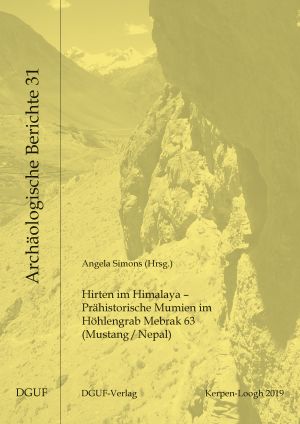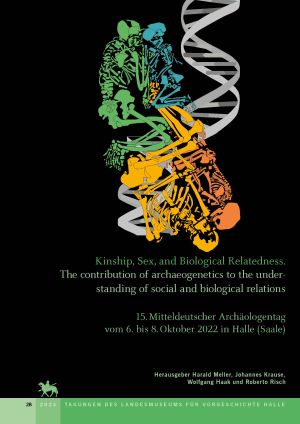Alt, Kurt W.
Hirten im Himalaya – Prähistorische Mumien im Höhlengrab Mebrak 63 (Mustang/Nepal)
This publication reports the results of the archaeological investigation of the prehistoric burial cave Mebrak 63 in Dzong valley, a high mountain valley in the Nepal Himalayas. 15 authors describe the excavation and present the interpretation of the complex archaeological findings and remains in ten chapters. In the appendix primary data are included: tables, the catalogue and plates of the archaeological finds.
Co-operation between archaeology and anthropology, textile archaeology, archaeo-botany and dendro-archaeology made it possible to reveal to a great extent the meaning of the prehistoric grave chamber and to come close to the people who were entombed in the collective burial cave in the last millennium before the Christian era. The analysis of the findings which, due to their preservation, are so far unique, provides insight into the way of life and the wide spread exchange and trade links of the prehistoric pastoralists.
Frühe Alamannen im Breisgau: Untersuchungen zu den Anfängen der germanischen Besiedlung im Breisgau während des 4. und 5. Jahrhunderts nach Christus
Due to numerous excavations and new discoveries in recent years, the starting position for the exploration of the Breisgau region on the southern Upper Rhine in early Halamannic times has improved considerably. In late antiquity, the Breisgau was a border area between Romans and Germanic tribes. Roman castles on the Rhine on the one hand and Early Halamanian settlements on the plain and on the Black Forest rims on the other hand were partly in close proximity. Especially the extensively excavated settlement of Mengen on the Tuniberg and the hilltop settlement on the Zähringer Burgberg brought numerous new aspects to the archaeology and history of the early Alamanni.
The extensive analysis of the hand-formed Germanic pottery was a prerequisite for the assessment of the Early Alemannian settlement in the Breisgau region, since the pottery of the Early Alamanni shows formal similarities with the pottery of some prehistoric settlement phases, and there were often confusions. With this investigation it has been possible to highlight technological differences between the hand-formed pottery of early Alamanni and prehistoric times, which allow a clear attribution.
Kinship, Sex, and Biological Relatedness : The contribution of archaeogenetics to the understanding of social and biological relations
Relationships between people have always been the basis of social coexistence. Kinship – whether it is biological or social – has a very special significance. In archaeology, these immaterial connections have rarely been proven beyond doubt. In recent years, however, the field of archaeogenetics has developed methods and techniques that, given good DNA preservation, make it possible to determine the degree of genetic relatedness between two people who lived in the past.
The studies collected in this book, draw their knowledge on kinship from the fields of anthropology, archaeology, genetics, and the historical and social sciences. They demonstrate, on the basis of recent or previously known sites, which conclusions the new scientific insights allow on the one hand, but on the other hand also point out their limitations in the interpretation of (pre-)historic societies.









